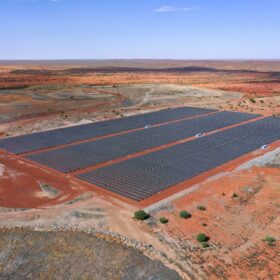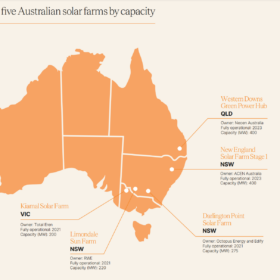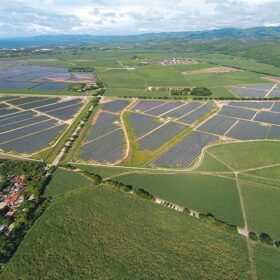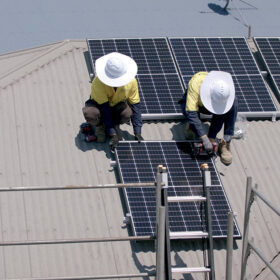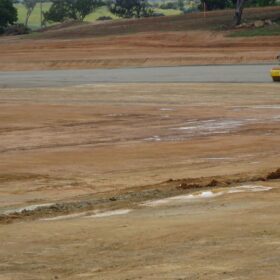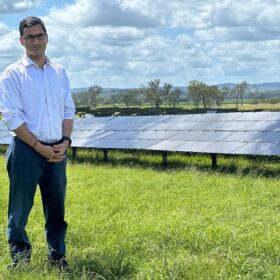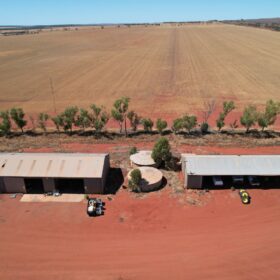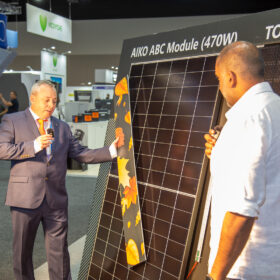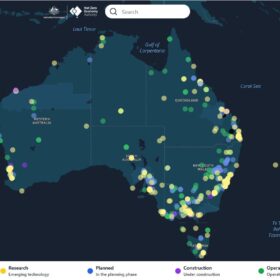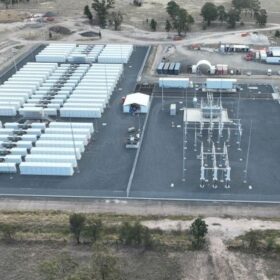SolarPlus launches its latest generation of ‘smart energy simulator’ software
New software released to serve both installers and consumers. The software aims to recommend optimal solar panel configuration and use of the solar energy by the household.
Hybrid power systems fuel renewable energy pathway for gold producer
Australian renewables infrastructure provider, Pacific Energy, has completed and delivered four solar-BESS-gas hybrid systems, which have a combined capacity of 82 MW, to gold producer Westgold Resources.
CEC finds utility scale financial commitments fall short of target in 2023
A new Clean Energy Council report finds large-scale solar commissioning up but financial commitments below what is needed for the 6 GW annual generation required under Australia’s 82% renewables-by-2030 target.
ACEN and BrightNight to develop 1 GW of renewables in Philippines
Both active in the Australian renewables market, Philippines-based energy company ACEN has partnered with United States-headquartered producer BrightNight to develop the latter’s 1 GW renewable power portfolio in the Philippines.
SafeWork NSW launches blitz on rooftop solar installations
The New South Wales workplace health and safety regulator has commenced a compliance blitz focusing on the safe installation of rooftop solar systems with inspectors to ensure business owners are checking on the safety of subcontractors.
New tool to calculate efficient earthworks for ground-mounted PV
A unit of French construction group Vinci has developed a new tool to ensure efficient earthworks for ground-mounted PV systems, with a focus on optimization parameters, design restrictions, allowable slopes for mounting structures, and terrain adaptation.
Hydro-solar hybrid starts commercial operations in Thailand
The Generating Authority of Thailand has announced that a 24 MW floating hydro-solar hybrid project has commenced commercial operations in the country’s northeast. The installation is part of wider plans to develop 16 floating solar projects with a combined capacity of 2,725 MW.
UQ start-up tips all-in-one O&M system to save solar farms millions
A Queensland tech start-up says it has developed an AI-based all-in-one solar farm operation and maintenance system that promises to boost the reliability of solar projects and could save the renewable energy industry $200 million a year.
bp increases stake in 26 GW Australian Renewable Energy Hub
Investment bank Macquarie Group has sold its share in the 26 GW Australian Renewable Energy Hub megaproject proposed for Western Australia’s Pilbara region to oil and gas giant bp.
China’s Aiko to deliver 2 GW of All Back Contact modules to Australian shores from March
Chinese manufacturer Aiko showcased its GEN 2 N-type ABC (All Back Contact) modules at last week’s Smart Energy Expo, where the technology’s shade optimisation, enabled by its cells’ bypass diode function, made a splash. Pv magazine spoke to Aiko’s leadership about how its technology works and how the Australian market entrant plans to position itself down under.

